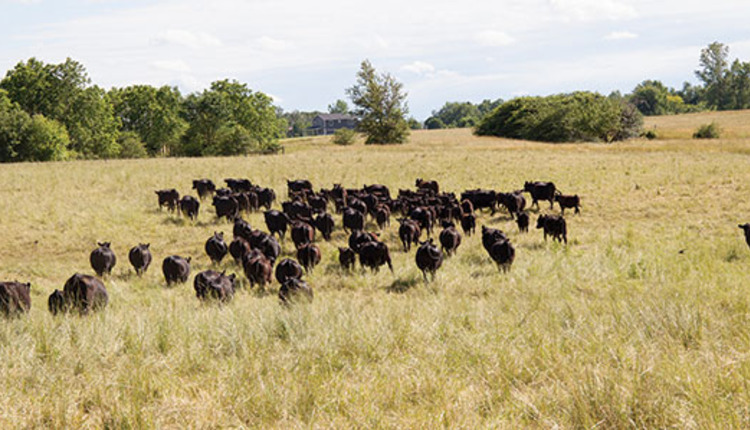Plan for drought . . . now |
| By Gary Bates |
|
|
The author is the director of the University of Tennessee Beef and Forage Center. Drought is often not a question of “if” but rather “when.” Having a plan in place to get through it can keep both cattle and pastures productive.
This time of the year most of us are waiting for winter to end, looking forward to warmer temperatures and greener pastures. Very few people woke up this morning thinking about drought. That topic won’t enter our minds for another few months. By that time, however, drought might become one of the dominant topics on everyone’s mind. The problem is that if we wait until June or July to start thinking about how to deal with a drought, we have missed out on several management tools to reduce its impact. A drought during the summer will always be a threat. In fact, I could argue that summer drought is normal. The only variation will be in the length and intensity of the drought. In order to reduce the impact of these droughts, there are several things we can focus on over the next few months. Correct soil fertility issues: In order to survive periods of limited moisture, plants need to be vigorous with a healthy root system. If plant nutrients are limiting, or soil pH is low, there is the potential for plant growth to be reduced, limiting the plant’s ability to survive drought. Often producers think that hayfield stands last longer because they aren’t grazed. That is partially true, but it is often also due to higher soil fertility in hayfields versus pastures. Go ahead and soil test your fields now so that you can have results in time to fertilize. If the results don’t arrive in time, it provides information needed to topdress with additional nutrients if needed. Improve grazing management: Often we think about our grazing management during the drought, trying to not overgraze and kill the plants. We have all seen fields that have to be replanted because they were grazed too hard during a drought. But preventing overgrazing during the spring when plant growth is good is just as important for drought survival. As mentioned above, root growth is important in a plant’s ability to survive drought. Research has shown that overgrazing has a dramatic impact on grass root development. If you graze a plant, root growth will stop for a few days. The more and longer you overgraze, the more dramatic the impact. In fact, if you continuously overgraze a pasture, root growth will essentially stop until you let the plants have a chance to regrow and restore some of their reserve carbohydrates. The best way to graze a field is to remove all of the forage, then rotate cattle to another field and let the forage regrow. This will create a situation in which the plants can recover both above and below ground. How fast to remove the forage and how long to let the field regrow will depend on your resources and goals. But during spring, a goal should be to graze a field for four to seven days, then allow 21 to 28 days to recover. If you have to graze a field longer or have fewer days for regrowth, it doesn’t mean all is lost. Anything you can do to allow more days for rest will help root regrowth and reduce summer drought impact. Plant warm-season species to supplement cool-season pastures: Let’s say you have tall fescue pastures that you have tried to manage well during the spring. But a drought hits and you’re in a no-win situation. You don’t want to overgraze during the drought, but you don’t have any pasture growth, so there is no way to prevent overgrazing. How can you manage this? One solution is planting a few acres of some warm-season forage species. It might be bermudagrass, crabgrass, sorghum-sudangrass, or one of the native grasses. But the point is to plant a forage species that is more adapted to summer temperatures and more efficient with its water use. These species have a photosynthetic pathway that allows them to conserve water while maintaining productivity. You should be able to continue to graze much longer into a drought using one of these species compared to using tall fescue. The appropriate species will depend on several things, such as your location, soils, and goals. We are not able to list the pros and cons of each of the various warm-season grasses in this article, but we can say to plan now and determine which species you want to use to provide grazing during the summer. Conclusion: Oftentimes we act as if droughts are unusual and abnormal. In reality, droughts should be expected and planned for. We can’t particularly eliminate droughts, but we can reduce their impact. Don’t wait until the drought hits to start the planning. Now is the time to develop your drought strategy. This article appeared in the March 2018 issue of Hay & Forage Grower on page 8. Not a subscriber? Click to get the print magazine |
